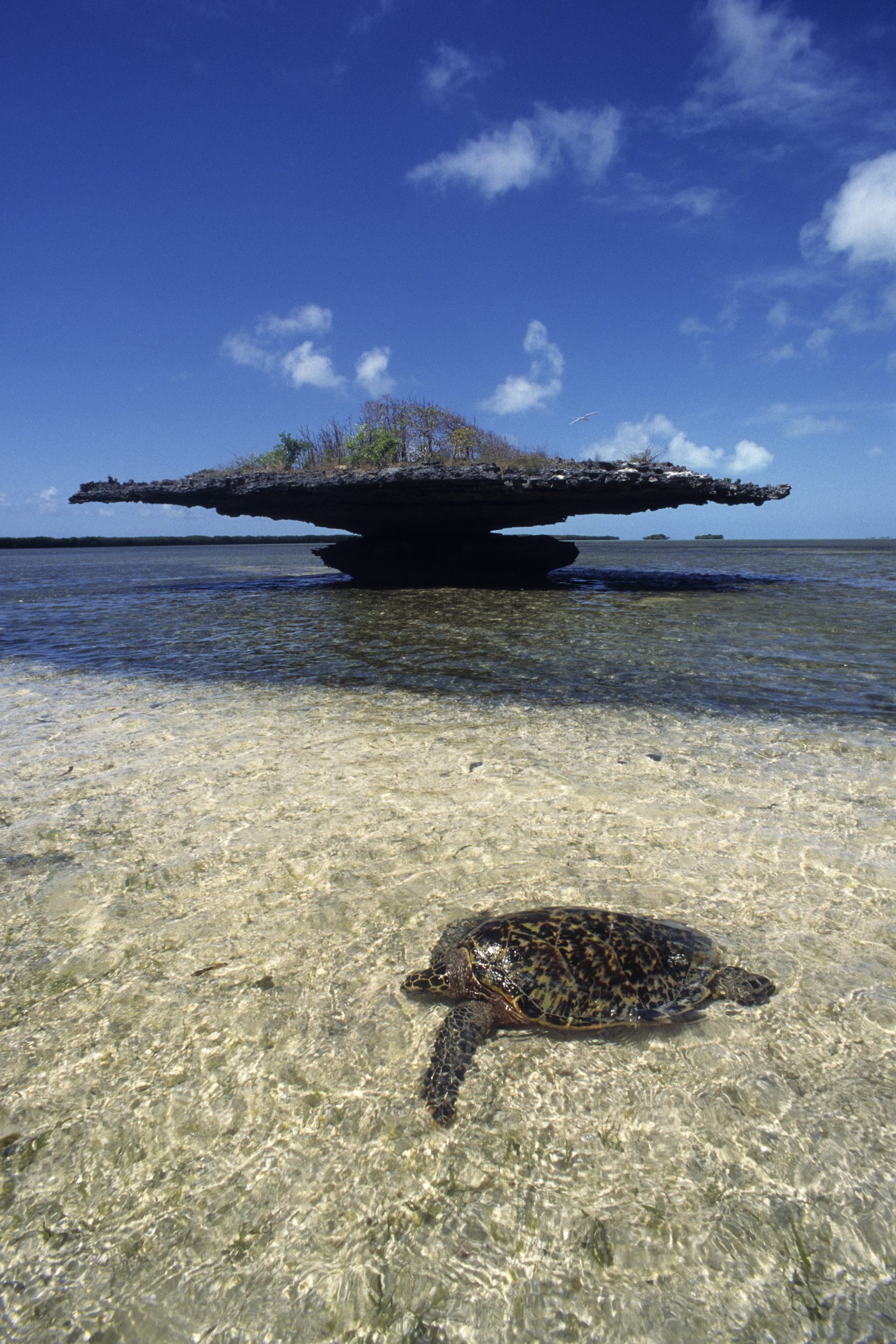Aldabra Atoll
Aldabra is the second largest coral atoll on earth, yet one of its least visited. Even Jacques Cousteau called it the “last unprofaned sanctuary on this planet.” For that, you have distance to thank. Situated in the Indian Ocean 700 miles off the island of Mahé, this UNESCO World Heritage Site takes tremendous determination and preparation to visit. So why bother? Because you’ve never seen anything so wild in your life.
Aldabra features a large turquoise lagoon ringed with a quartet of coral limestone islets and a pristine reef. Its extreme isolation has largely protected it from human interference. Scientists come from across the globe to study the rich biodiversity of this nearly untouched marine habitat; it’s also paradise for wildlife lovers. There are more than 100,000 giant tortoises here (outnumbering the entire Seychellois population of Mahé, in fact) as well as critically endangered hawksbill turtles, blacktip sharks and manta rays. Plus the atoll is one of only two known oceanic breeding sites for greater flamingos. But they’re not the only flamboyance you’ll find around these parts; red-footed boobies, with their baby-blue beaks and candy-apple feet, also know how to work a camera.
Good To Know
Visiting this special reserve is a super exclusive experience that’s closely monitored. Government permission is required, and tourists pay a daily impact fee. Expect to be babysat by a member of the Seychelles Islands Foundation throughout your visit.
How To Get There
First you fly to Mahé, which takes anywhere from 23 to 57 hours, then you catch one of two monthly boats out to Aldabra. Sound intense? It is. The easier — and more luxurious — way to visit this unspoiled atoll is to book an Indian Ocean expedition cruise.
Where To Stay
No hotels or guesthouses are permitted in the atoll, so you must arrange accommodations on a live-aboard vessel departing from Mahé or Assumption Island. Entrust specialists like Ponant, Silversea and Noble Caledonia.



